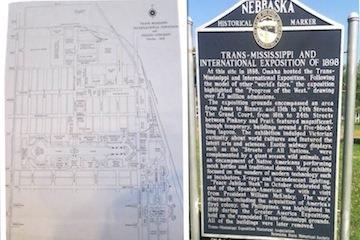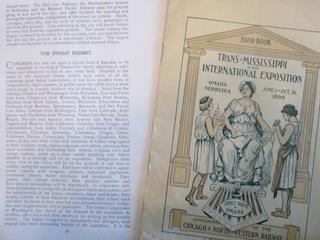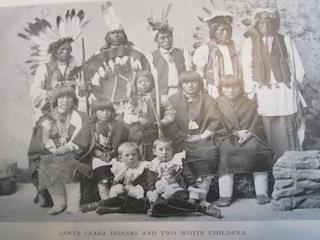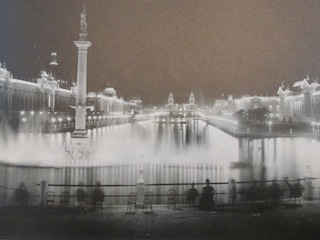Making Invisible Histories Visible
Page Navigation
- Making Invisible Histories Visible
- Lesson Plans and Resources
- iBooks on Omaha and Nebraska History for Primary Students
- Omaha Mapping Projects
-
African American Histories
- African American Artists
- African American Athletes & Facilities
- African American Churches
- African American Civil Rights Organizations - 1950s-1960s
- African American Civil Rights
- African American Contributions to Jazz, Gospel, Hip-Hop
- African American Dramatic Arts
- African American Education - Dorothy Eure & Lerlean Johnson
- African American Educators & Education
- African American Firefighters
- African American Homesteaders
- African American Law Enforcement
- African American Migration to Omaha
- African American Musicians of Omaha
- African American Newspapers
- African American Owned Businesses
- African American Politicians
- African American Social Life
- African American Workers at Omaha's Railroads & Stockyards
- African American Workers at the Naval Ammunition Depot in Hastings
- African Americans in the Civil War
- African Americans in Vietnam
- Charles B. Washington - Journalist and Civil Rights Leader
- Elizabeth Davis Pittman - Lawyer/Judge
- Green Book Omaha
- Marlin Briscoe - Professional Football Player
- Native Omaha Days
- Nebraska's Role in the Underground Railroad
- Sen. Edward Danner - Politician & Civil Rights Activist
- Sudanese Refugees
- Tuskegee Airmen
- European and Asian Immigrant Histories
-
Historic Neighborhoods & Buildings
- 24th and Binney/Wirt/Spencer Streets
- 24th and Lake Streets
- Central Park Neighborhood - 42nd and Grand Avenue
- Dahlman Neighborhood - 10th and Hickory Streets
- Hartman Addition Neighborhood - 16th and Williams Streets
- Indian Hills/Southside Terrace Neighborhood - 30th and Q Streets
- Jefferson Square Neighborhood - 16th and Chicago Streets
- Long Neighborhood - 24th and Clark Streets
- Orchard Hill Neighborhood - 40th and Hamilton Streets
- Smithfield Neighborhood - 24th and Ames Avenue
- St. Mary's Neighborhood - 30th and Q Streets
- Latino Histories
- Music Histories
-
Native American Histories
- Black Elk and John G. Niehardt
- Chief Standing Bear and Susette La Flesche Tibbles
- Dr. Susan LaFlesche Picotte - Native American Doctor
- Native American Education and Boarding Schools
- Native Americans in the Military
- Pre-statehood Interaction of Native Americans and Europeans
- Preserving Native American Tradition
- Restoring the Ponca Tribe
- The American Indian Movement in the 1960s and 1970s
- The Indian Congress at the 1898 Trans-Mississippi Exposition
- The Omaha Native American Indian Tribe
- OPS Elementary School History
- Redlining in Omaha
- Nebraska's Role in the Underground Railroad
- The 1898 Trans-Mississippi Exposition
The Indian Congress at the 1898 Trans-Mississippi Exposition
-
How were Native Americans represented at the Indian Congress, and what purpose did this representation serve?
Real Culture, False Representations
-
"How smooth must be the language of the whites, when they can make right look like wrong, and wrong look like right." - Black Hawk, Sauk
One of the most significant events in Omaha history was the Trans-Mississippi Exposition. This exposition was intended to be an extraordinary world's fair that would show many unique exhibits and that would create an enlightening experience for people to attend. Out of the abundant amount of exhibits, one wasn't paid much attention to until it was altered. This attraction was the Indian Congress, and its purpose was to teach people their way of life, culture, and traditions. Fairgoers weren't connected to the idea of the Indian Congress, so the Legislative Board decided to change it to the Cowboys vs Indians Wild West Show. That change made it one of the best attractions at the fair, but it wasn't the true representation of the Native Americans in our society. Americans of today should appreciate how important of a part that Native Americans have in our history and everyday lives.
A 5 minute video interview in 2014 with Timothy Schaffert, author of a fiction book on the Trans-Mississippi Exposition, The Swan Gondola.
Indian Congress at the Trans-Mississippi Exposition
-

From June 1 to Nov. 1, 1898, Omaha hosted the Trans-Mississippi Exposition and Indian Congress. The World Fair ran from North Ames Avenue to South Wirt Street. It stretched from East Sherman Avenue (now 16th Street) to West 24th Street. The lagoon ran down the middle of what is now Kountze Park. The Indian Congress landed one-half mile north of the lagoon. (Map courtesy of Douglas County Historical Society)
Trans-Mississippi Hand Book
-
 In the photo on the left is a copy of one of the handbooks from the Trans-Mississippi Exposition. It is open on the page with the Indian Congress exhibit information. If you looked at the Indian Exhibit from the outside you would see many different things going on. There was at least one tribe there all the time. With each different tribe, you would see many different colors and patterns. Each tribe would have performed different ceremonies and festivals. They had their tepees, wigwams, and cabins set up so people could see them along with anything else that they would have set up. They had their pottery out along with any tools or ceremonial objects that they had. The ceremonial objects included decorated pipes, beaded clubs, and traditional ceremonial clothing. They were able to show their culture without the Europeans having an opinion on what was shown. (Artifact courtesy of Douglas County Historical Society)
In the photo on the left is a copy of one of the handbooks from the Trans-Mississippi Exposition. It is open on the page with the Indian Congress exhibit information. If you looked at the Indian Exhibit from the outside you would see many different things going on. There was at least one tribe there all the time. With each different tribe, you would see many different colors and patterns. Each tribe would have performed different ceremonies and festivals. They had their tepees, wigwams, and cabins set up so people could see them along with anything else that they would have set up. They had their pottery out along with any tools or ceremonial objects that they had. The ceremonial objects included decorated pipes, beaded clubs, and traditional ceremonial clothing. They were able to show their culture without the Europeans having an opinion on what was shown. (Artifact courtesy of Douglas County Historical Society)
Native Americans at the Indian Congress
-
 This is a photograph of the Santa Clara Indians and two children taken by the official photographer of the exposition, Frank Reinhart. Reinhart specialized in taking posed pictures of the Indian Congress and fairgoers throughout the exposition. The purpose of the Indian Congress was to bring tribes together and showcase their way of life, native industries, and ethnic traits. In this exhibit, there were over 500 Native Americans from 35 different tribes, including the Sioux, Omaha, Cheyenne, and Ponca tribes. By conjoining all these cultures and traditions, it allowed the fairgoers to be a part of a tremendous learning experience. (Photograph courtesy of Douglas County Historical Society)
This is a photograph of the Santa Clara Indians and two children taken by the official photographer of the exposition, Frank Reinhart. Reinhart specialized in taking posed pictures of the Indian Congress and fairgoers throughout the exposition. The purpose of the Indian Congress was to bring tribes together and showcase their way of life, native industries, and ethnic traits. In this exhibit, there were over 500 Native Americans from 35 different tribes, including the Sioux, Omaha, Cheyenne, and Ponca tribes. By conjoining all these cultures and traditions, it allowed the fairgoers to be a part of a tremendous learning experience. (Photograph courtesy of Douglas County Historical Society)
Additional Information
-
The outbreak of the Spanish-American War and the subsequent American acquisition of “uncivilized” territories like the Philippines and Puerto Rico pushed Social Darwinism to the forefront of debates about the American Empire. An important influence on domestic understandings of Empire, Omaha's 1898 Trans-Mississippi and International Exposition triumphantly showcased the progress of the West. Juxtaposed with exhibits touting industrial and scientific progress, the Indian Congress and similar exhibits of “exotic” peoples at the exposition reaffirmed the place of the white, Anglo-American culture at the top of the racial hierarchy. In particular, the Indian Congress presented an idealized indigenous past while the United States expanded its imperial reach overseas.
The Indian Congress presented Native Americans as the leading example of uncivilized peoples that the United States could help improve. Drawing on the image of the “noble savage,” the organizers sought to portray Native Americans as “primitive” as possible, desiring participants to “be as thoroughly aboriginal in every respect as practicable.” Despite the way in which the fair depicted them, hundreds of Native Americans still participated, often earning additional money selling various products they made.
The Indian Congress's organizers envisioned the display of Native Americans before contact with Western culture as an educational opportunity, allowing fair-goers a last glimpse at the “vanishing” lifestyles. Though originally intended as informative and academic, Captain W. A. Mercer had a falling out with Edward Rosewater of the Omaha Bee and ethnologist James Mooney over the nature of the Indian Congress. Captain Mercer pushed for entertaining spectacles like sham battles performed in the style of Buffalo Bill's Wild West, which also performed at the Trans-Mississippi Exposition. These popular performances drew on stereotypes of savage Indians attacking, and ultimately losing, to heroic white frontiersmen.
The Trans-Mississippi Exposition's Indian Congress was just one of many World's Fairs exhibits during the late 19th and early 20thj centuries that showcased “primitive” indigenous peoples in comparison to the “civilized” Western culture. Running concurrently with much of the Spanish-American War, the timing of the Indian Congress brought greater attention to its display of Native Americans as the United States looked towards its idealized past to determine its future.2014 MIHV Project

Student Reflections
-
"During this experience, I realized how often Native Americans get stereotyped and how important it is to have a voice. I also learned that the Native Americans have very significant land in our state and are proud of their culture. This was a great experience and helped my group and I connect and work together."
— Justice A.
"During this program, I learned that the Trans-Mississippi Exposition showed the Indian Congress on Ames Avenue. The exposition took place where I went to middle school. Now I know what history took place there and it isn’t just a place where I went to school."— Ariella G.
"The most important thing I learned in M.I.H.V was that Native Americans experienced racism. For example, some of the professional sports logos or even famous cartoons are racist, showing Native Americans very negatively. The reason racism was the most important is because society sees racism as white and black not really every color."— Maurice M.
Resources
-
Bederman, Gail. Manliness and Civilization: A Cultural History of Gender and Race in the United States, 1880-1917. Chicago: University of Chicago Press, 1995.
Hoganson, Kristin L. Fighting for American manhood: How Gender Politics Provoked the Spanish-American and Philippine-American Wars. New Haven: Yale University Press, 1998.
Katz, Wendy and Timothy Schaffert. Trans-Mississippi and International Exposition https://trans-mississippi.unl.edu/
Miller, Bonnie M. “The Incoherencies of Empire: The 'Imperial' Image of the Indian at the Omaha World's Fairs of 1898-99.” American Studies Vol. 49 No. 3/4 (Fall/Winter 2008): 39-62.
Mooney, James. “The Indian Congress at Omaha.” American Antropologist Vol. 1 No. 1 (Jan. 1899): 126-149.
Omaha Public Library, Trans-Mississippi and International Exposition https://www.omaha.lib.ne.us/transmiss/
Rydell, Robert W. “The Trans-Mississippi and International Exposition: 'To Work Out the Problem of Universal Civilization.” American Quarterly Vol. 33 No. 5 (Winter 1981): 587-607.
Trennert, Jr., Robert A. “Selling Indian Education at World's Fairs and Expositions, 1893-1904.” American Indian Quarterly Vol. 11 No. 3 (Summer 1987): 203-220.
UNO Television and Nebraska Educational Telecommunications Commission. Westward the Empire: Omaha's World Fair of 1898 https://netnebraska.org/interactive-multimedia/television/westward-empire-omahas-worlds-fair-1898
Warren, Louis S. Buffalo Bill's America: William Cody and The Wild West Show. New York: Alfred A. Knopf, 2005.
Research compiled by: Justice A., Ariella G., Maurice M.

